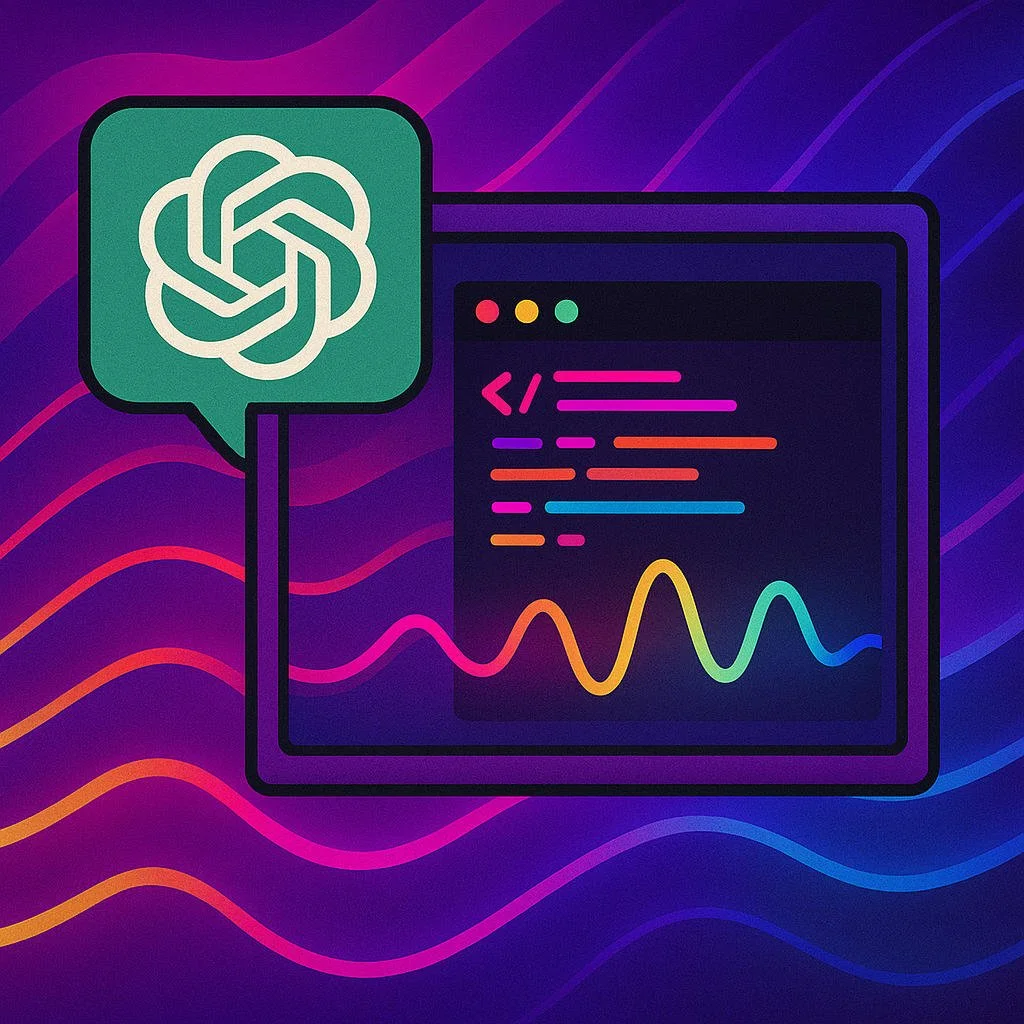Why Does ChatGPT Use So Much Water?
Short answer: It’s not “ChatGPT drinking water,” it’s the data centers
ChatGPT itself isn’t running on a laptop under someone’s desk. It lives on huge clusters of servers in data centers. Those data centers:
Use a lot of electricity
Generate a lot of heat
Need to be cooled so the hardware doesn’t fry
Cooling systems and power generation are where water comes in.
So when people say “ChatGPT uses a lot of water,” what they really mean is:
The data centers that train and run ChatGPT consume water, directly and indirectly, to stay cool and produce electricity.
Where the water goes: two main pathways
1. Direct water use: cooling the data centers
Many data centers use water-based cooling systems. In simple terms:
Hot air from the servers is cooled by chilled water loops
That water is cooled again using cooling towers or evaporative coolers
In these systems, some water is lost to evaporation and must be replaced
The hotter and drier the climate, the more water can be lost during evaporative cooling. Data centers in water-stressed regions can therefore have a larger water footprint per unit of compute than those in cool, wet climates.
Some cooling designs (like certain air-cooled or liquid direct-to-chip systems) use less water but may use more electricity instead. There is always a tradeoff between water use, energy use, and cost.
2. Indirect water use: generating electricity
Even if a specific data center is “air-cooled,” it still uses large amounts of electricity, and electricity generation often uses water:
Thermal power plants (coal, gas, nuclear) use water for steam cycles and cooling
Some hydroelectric plants involve large reservoirs, which also have water impacts
The exact water footprint depends on the local energy mix
So every watt used by a GPU cluster indirectly taps into water consumed by the regional power grid for cooling and generation.
This is why studies often talk about AI’s “water footprint” rather than just “data center cooling.” It’s the sum of:
Direct water for cooling hardware
Indirect water used by power plants to make the electricity
How big is ChatGPT’s water footprint, roughly?
Because OpenAI and cloud providers don’t publish a line-by-line breakdown for “ChatGPT’s water usage,” most numbers are estimates based on:
Data center efficiency
Power usage effectiveness (PUE)
Typical water use in cooling systems
Local power mix and water intensity of electricity
Academic work in 2023 estimated that training a large language model of GPT-3 scale could consume on the order of millions of liters of water, once you account for both direct cooling and indirect power-related water use.
Other analyses suggested that each conversation or query to a large model can be associated with the equivalent of a fraction of a liter of water (like a few sips or a small bottle), depending heavily on assumptions about:
Where the model is hosted
Time of year and climate
The underlying power grid and cooling tech
The key idea:
Individual interactions are tiny, but billions of them add up. Training runs are massive, so even a small per-hour water use multiplied by thousands of GPUs over weeks becomes very large.
Numbers vary widely by study, but they all point to one conclusion: high-end AI is not “virtual” in its environmental impact. There is a real physical cost in energy and water.
Why AI uses more water than “regular” computing
It’s not that ChatGPT is magically thirstier than a standard web app. It’s that:
Models are huge
Billions of parameters
Trained on massive datasets over weeks or months on GPU clusters
Inference is heavy
Serving millions or billions of queries across the world
Each query involves high-performance chips running at full tilt
Hot chips = more cooling
High-performance GPUs draw lots of power and generate a lot of heat
More heat → more cooling → often more water
As AI workloads become a larger portion of total data center activity, they push up both energy and cooling demands, unless efficiency improves dramatically.
Why people are suddenly talking about AI and water
A few reasons this topic has blown up:
Rapid AI growth: The sudden popularity of tools like ChatGPT triggered a spike in AI compute demand, prompting analysts to look at environmental impact.
More transparency (and pressure): Tech companies now publish more environmental data (energy use, emissions, sometimes water use) and are under pressure from regulators, investors, and the public.
Water scarcity: Many regions that host data centers already face water stress or drought, making any large new water user controversial.
So “why does ChatGPT use so much water?” is really part of a bigger conversation:
How do we balance the benefits of powerful AI with the environmental and resource costs of running it?
What factors influence how much water ChatGPT uses?
The water footprint is not fixed; it depends on several variables.
1. Location of the data centers
Data centers in cool, humid climates can often rely more on air cooling and use less water.
Data centers in hot, dry regions often lean on evaporative cooling, which uses more water per unit of compute.
Local water availability and regulations can force different design choices.
2. Cooling technology
Chilled water + cooling towers: Efficient in energy terms but typically uses more water.
Direct air cooling: Uses more fan power and energy but less direct water.
Liquid direct-to-chip systems: Can be highly efficient and reduce overall cooling overhead; water impacts depend on design.
Heat reuse systems: Some facilities pipe waste heat into buildings or district heating networks, improving overall resource efficiency.
3. Energy mix
If the local grid relies heavily on thermal power plants, its water intensity will be higher.
More renewables like wind and solar can reduce the indirect water footprint, since they usually need less water than thermal plants.
Nuclear power uses water for cooling but has very different emissions and fuel characteristics.
4. Model size and usage patterns
Larger models with more parameters require more power to train and run.
Heavy usage (e.g., enterprises running large workloads 24/7) increases cumulative water use.
Efficient scheduling and load balancing can sometimes align heavy work with cooler times or locations, changing cooling needs.
What is being done to reduce AI’s water footprint?
AI providers, cloud companies, and data-center operators are experimenting with several strategies.
1. More efficient models
Research into smaller, more efficient models that can deliver similar performance with less compute.
Techniques like quantization, pruning, and distillation reduce the amount of hardware and energy needed.
Caching and smart routing reduce redundant computation.
Less compute → less energy → less heat → less cooling → less water.
2. Better data center design
Shifting toward more efficient cooling systems, including advanced liquid cooling.
Using air-side economization (using outside air when cool enough) to reduce reliance on water-consuming systems.
Designing for heat reuse so the waste heat warms buildings, pools, or district heating systems instead of going to waste.
3. Siting choices and water stewardship
Building new data centers in regions with:
Cooler climates
More stable water supplies
Lower-carbon, less water-intensive grids
Investing in water stewardship projects locally: restoring watersheds, improving local water systems, or offsetting water usage in some regions.
4. Aligning workloads with conditions
Scheduling certain compute-heavy jobs at night or in cooler seasons.
Moving workloads between regions depending on:
Carbon intensity
Water availability
Cooling efficiency at that moment
This is still an emerging practice, but the idea is to treat AI workloads as something that can be flexibly routed to minimize environmental impact.
Why you might care as a user
From your perspective, ChatGPT is “just text on a screen.” But behind that simple interface is a big, energy-hungry, water-using machine.
You might care because:
You’re concerned about climate change and resource use.
Your company has its own sustainability targets and wants to know the impact of using AI.
You’re trying to compare different AI tools and want to factor in environmental footprint, not just price and speed.
The more users and customers ask about water, carbon, and resource usage, the more pressure there is on providers to:
Publish better data
Improve efficiency
Make smarter infrastructure decisions
Can using ChatGPT less help the planet?
In a purely physical sense, yes:
Every query uses a bit of compute, electricity, and indirectly, water.
If you avoid unnecessary calls, that usage drops.
But in practice, the bigger levers are:
How efficient the models and data centers are
How companies design and run their infrastructure
What energy sources and cooling systems they choose
As an individual, your biggest impact usually comes from:
Supporting policies and products that favor efficient, low-carbon, low-water AI
Using AI where it replaces higher-impact activities (like travel or energy-intensive tasks) rather than where it just adds more load without benefit.
The bottom line
ChatGPT uses a lot of water indirectly because:
It runs on huge data centers that need intensive cooling
Data centers consume large amounts of electricity
Both cooling and power generation often rely on water
The more compute-hungry the AI, the more energy and cooling are required, which in turn inflates its water footprint.
The good news is that:
AI efficiency is improving
Data centers are getting smarter and more efficient
There is growing awareness and pressure to measure and reduce AI’s impact on water and climate
So when you hear “ChatGPT uses a lot of water,” it’s not a weird metaphor. It’s a reminder that even digital tools live in the physical world—tied to power plants, cooling towers, and the same water systems we all depend on.







